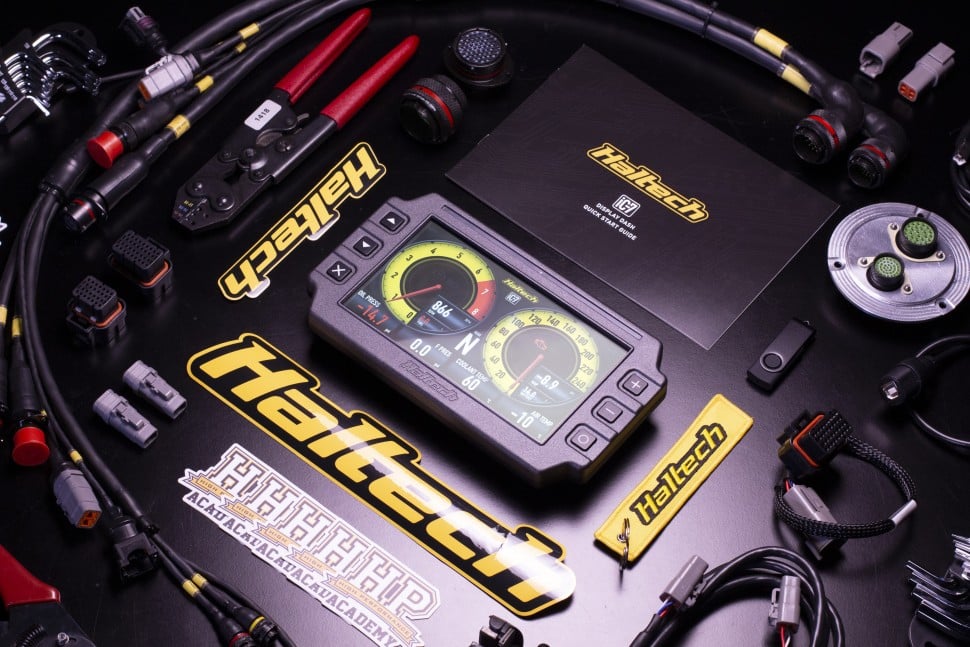| 00:00 |
Car brakes are often overlooked when it comes to cooling, but managing braking thermals is quite critical, particularly on faster cars.
|
| 00:07 |
If you think about it, all of that energy that goes into accelerating the car has to be dissipated by the brakes when we slow down.
|
| 00:14 |
For example, braking in an F1 car into some corners can exceed two and a half thousand kilowatts of power output, and all of that goes straight into heating up the braking system.
|
| 00:26 |
The numbers are obviously less on a club level car, but we're still talking a significant amount of heat that needs attention.
|
| 00:34 |
Brake cooling comes down to two real considerations, keeping the disc cool and keeping the caliper cool.
|
| 00:39 |
Discs are cooled in a very similar way to heat exchangers.
|
| 00:43 |
The core of a brake disc contains a large number of fins between the two flat outer faces of the brake disc.
|
| 00:48 |
The shape of these fins, also called vanes, encourages the air to move from the centre of the disc outwards as the disc rotates, a bit like a leaf blower or turbocharger compressor.
|
| 00:59 |
As air moves through the disc, the vanes conduct heat into the air, much like the fins of a heat exchanger, and thus the air heats up and the discs cool down.
|
| 01:09 |
Usually this means the discs have a short period of heating during a braking event, then a longer period of cooling during the straights as the air continues to flow through them.
|
| 01:19 |
The most efficient way to cool the disc is typically to direct air into the centre with a scoop or hosing from an area of high energy air, such as a hole in the front bumper.
|
| 01:30 |
If we can get this air blowing into the central region so that it feeds in through the middle of the disc, then works its way out to the periphery, this should help out with our brake temps.
|
| 01:40 |
Some disc types, like carbon discs, may also need what's known as face cooling.
|
| 01:45 |
This is when we blow air across the face of the disc as well, and cool directly off the disc face.
|
| 01:51 |
While this is less efficient than core cooling, it can help with disc-pad interactions.
|
| 01:56 |
To accomplish this, we just expand where our duct lands a little more, blowing air across the face of the disc as well as into the core.
|
| 02:04 |
An often neglected part of brake cooling is the calipers.
|
| 02:08 |
Calipers are typically made of aluminium, which doesn't really like elevated temperatures for long periods of time.
|
| 02:15 |
They also interface with the brake fluid, which definitely doesn't like getting hot and in extreme cases will boil, giving poor brake feel and poor braking reliability.
|
| 02:25 |
The best approach here is to have a dedicated part of the ducting that blows on the caliper to keep it cool.
|
| 02:31 |
This is especially important if we have a wheel shield that stops the natural flow of air through the wheel.
|
| 02:37 |
With that covered, here are the main points to remember when it comes to brake cooling.
|
| 02:41 |
Brake cooling is critical, especially for faster cars, as all the energy used to accelerate must be dissipated by the brakes during deceleration, generating significant heat.
|
| 02:52 |
Effective brake cooling involves directing air to the disc's core and through fins, which are known as vanes, which help conduct heat to the airflow and force it outwards, similar to how a heat exchanger works.
|
| 03:05 |
Core cooling is typically the most efficient means, but face cooling may also be necessary for certain disc types.
|
| 03:12 |
Additionally, caliper cooling is essential to prevent overheating of the aluminium calipers and brake fluid, with dedicated ducting recommended to keep them cool.
|





